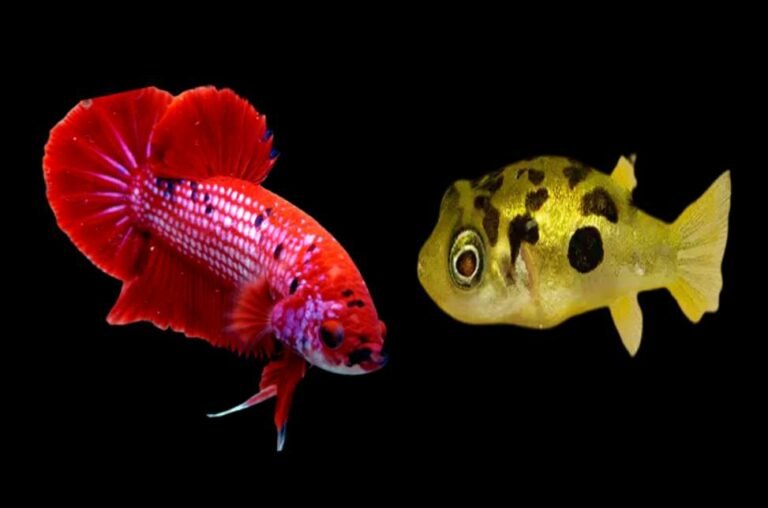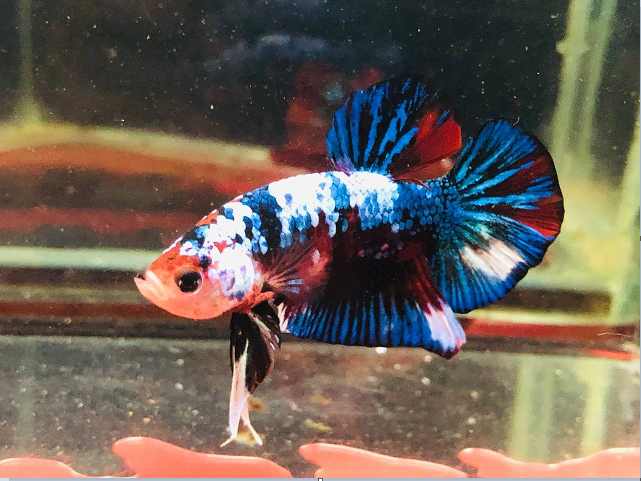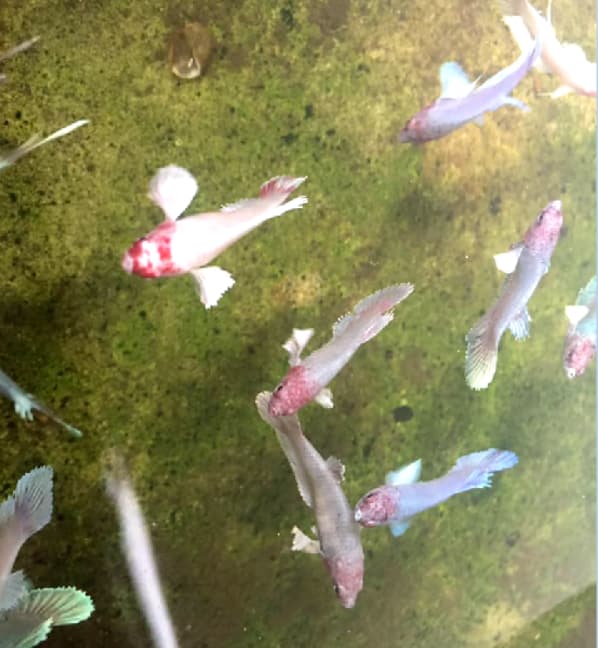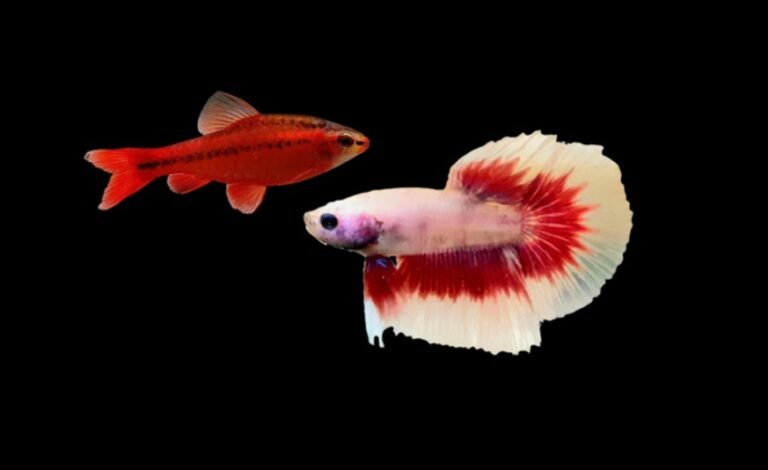How Many Female Bettas Can Live Together?
Female bettas are multicolor, less aggressive, and more active than other fish breed females. With over 70 recognized species, Betta fish exhibit diverse behaviors and needs. While most aquarium hobbyists know that male bettas (Betta splendens) are aggressive and territorial, requiring solitary housing, Female bettas present an opportunity for community aquariums. However, specific considerations should be made when keeping multiple female bettas together.
An ideal home for a small sorority of 3-5 female bettas provides approximately 10 gallons (38 liters) of water per fish. This allows each female to establish her territory while minimizing conflict. The water should be heated to 78-80°F (25-27°C) and filtered to support biological filtration. Adding “plants, caves, and decor” provides visual barriers and hiding spots.

When introducing female bettas, use drip acclimation over 1-2 hours to minimize stress. Monitor the tank closely for signs of aggression, like flared gills, chasing, and nipped fins. Be prepared to separate bullies into timeout containers. Target feeding allows every female access to food. Perform partial water changes of 25% – 30% weekly and test water parameters like ammonia, nitrites, and nitrates.
While not as pugnacious as males, female bettas may still fight, especially when space and resources are limited. Providing an adequately sized tank with elements that meet their natural behaviors enhances compatibility. With proper habitat setup and supervision, a small group of female bettas can make an active, engaging community aquarium.
Table of Contents
- What Is a Betta Sorority Tank?
- Choosing and Adding Females to a Betta Sorority Tank
- Ideal betta sorority tank size
- Keep female betta fish in a 10-gallon Tank
- How Many Female Bettas In A 20-Gallon Tank?
- Are female bettas fighting for territory?
- What can you do if female bettas fight?
- Conclusion
What Is a Betta Sorority Tank?
A betta sorority is a community aquarium containing 4-6 female betta fish (Betta splendens). Female bettas can coexist by establishing a social hierarchy, unlike males, who are intolerably aggressive towards conspecifics.
The ideal sorority tank size is 10+ gallons, with each fish needing 5 gallons of swimming space. Water parameters should be maintained at a pH of 6.5-7.5 and <20 ppm nitrates. Ammonia and nitrites must measure 0 ppm. Adequate filtration and weekly 25% water changes are required.
The minimum number of females for a successful sorority is 4. With 2 fish, bullying is frequent. With 3 fish, two can gang up on 1. Having 4+ spreads aggression and prevents targeted attacks. Introduce all new fish simultaneously to allow balanced establishment of the pecking order.
Select females of varying coloration and finnage to ease identification and diffuse aggression towards look-alikes. Provide plenty of hiding spots and line-of-sight breaks with plants and decor. Monitor for signs of bullying like flare displays, chasing, and nipped fins. Be prepared to separate aggressors.
A female betta sorority can be a vibrant, active community aquarium with proper tank setup and maintenance. The key is starting with at least 4 females and providing adequate territory for each fish to claim.
Choosing and Adding Females to a Betta Sorority Tank
When selecting female bettas for a sorority tank, aim for young, healthy fish of similar size and age to reduce aggression. Choose females with vibrant coloration and flowing fins, avoiding any with signs of illness or injury.
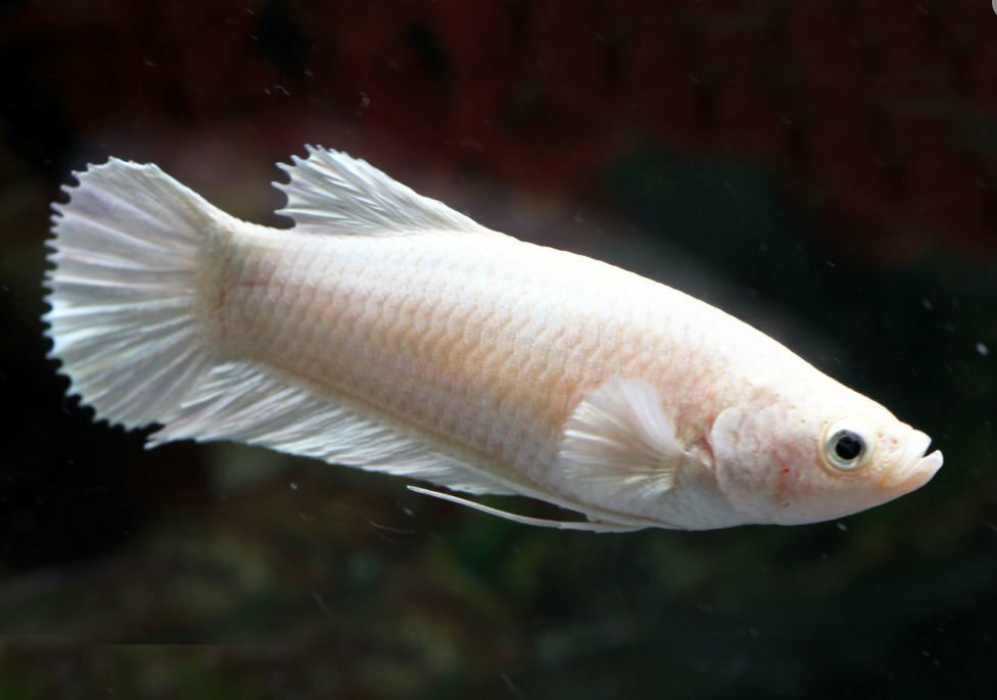
Adding sequentially, allow the most passive female to explore alone for 15 minutes before adding the next most docile, and so on. The most aggressive female should be the last to join.
Monitor closely for the first several days, watching for chronic chasing, flaring, and nippy behavior. Some mild squabbling is expected as they establish a pecking order. Remove any female who is frequently harassed or unable to feed.
Continue observing the sorority long-term. Reconfigure decor periodically to disrupt territories. Have backup tanks ready to isolate aggressive females or victims of bullying. Introduce any new additions gently over several days.
With extra attention to selecting compatible females, a betta sorority can thrive. Daily monitoring and readiness to separate any persistently aggressive or stressed fish are key to success. Begin with groups of 4-6 similarly sized, vibrant females to start the sorority off evenly.
Ideal betta sorority tank size
- The minimum tank size is 10 -15 gallons, but bigger is better. Aim for at least 5 gallons of swimming space per female.
- Longer tanks are preferable over tall ones. Bettas primarily utilize the surface area. A long footprint provides more territory.
- 20 gallons or larger is ideal for a sorority of 4-6 females. This allows plenty of room to establish boundaries and retreats.
- Heavily plant the tank, including caves, driftwood, and decor. This breaks up sightlines and offers hiding spots.
- Arrange the layout thoughtfully, creating defined spaces and barriers. Distinct territories reduce encounters and conflict.
- Perform frequent water changes and test water quality often. Waste accumulates quickly in smaller volumes.
- Upgrade tank size if any aggression or stress issues arise. More room decreases competition over resources.
The bottom line is bigger is better for a betta sorority. Ample territory relieves crowding stress and aggression. Focus on longer footprints, dividing the landscape, and sticking to 4-6 females for 10+ gallon tanks.
Keep female betta fish in a 10-gallon Tank
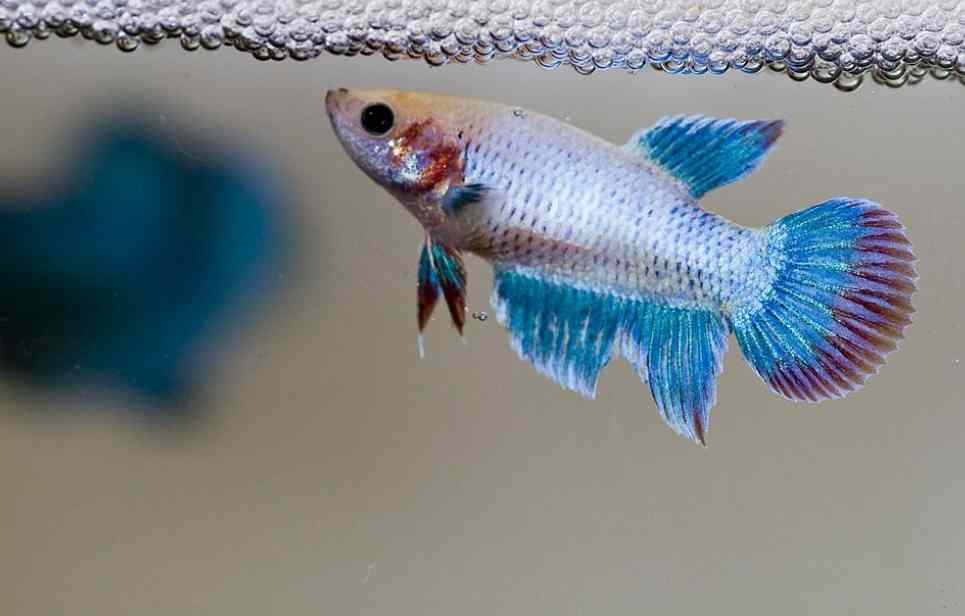
Here are some additional considerations for housing a betta sorority in a 10-gallon tank.
- A 10-gallon tank can work for a small sorority of 4 female bettas, but it’s the bare minimum size.
- Ensure to provide at least 2.5 gallons of open swimming space per fish. Overcrowding increases stress and aggression.
- Heavily plant the tank but leave ample open areas for swimming. Avoid overstuffing the tank.
- Use silk plants and soft decor to prevent torn fins. Betta fins are delicate.
- Arrange the layout thoughtfully with clear sightline breaks. Define separate territories for each female.
- Monitor water quality closely. Ammonia and waste accumulate faster in smaller volumes. Conduct partial water changes at least twice a week.
- Supplement filtration with air stones or power heads to prevent stagnant spots. Oxygenation is key.
- Upgrade to a larger tank if any signs of aggression or stress emerge. More room alleviates territorial issues.
- Consider a 10-gallon tank a starting point. Ideally, provide 5+ gallons per female long-term for the healthiest sorority.
While a 10-gallon tank can potentially work for 4 female bettas, bigger is always better. Careful setup and maintenance are required to reduce aggression in limited space. Upgrade the tank if any problems occur.
How many Female bettas are in a 10-gallon tank?
- The recommended number is 4-5 females maximum for a 10-gallon tank.
- Each female betta needs a minimum of 2-3 gallons of personal space to reduce aggression.
- Overcrowding causes heightened stress, territorial disputes, and water quality issues.
- Start with 4 females, and only add a 5th if the tank dynamics are stable with no aggression.
- Heavily plant the tank and arrange decor to create clear visual barriers.
- Distinct territories and line-of-sight breaks are key to managing aggression.
- Monitor water parameters closely with partial water changes twice per week.
- Remove aggressors immediately if any chasing, flaring, or nipped fins occur.
- Be prepared to separate females into backup tanks if tension persists.
- Upgrade tank size if problems arise among the group, allowing more space per fish.
With careful setup and observation, 4-5 female bettas can cohabitate in a 10-gallon tank. But don’t overcrowd, and be ready to separate any problematic females for a more harmonious sorority.
How Many Female Bettas In A 20-Gallon Tank?
Here are some tips for stocking female bettas in a 20-gallon tank.
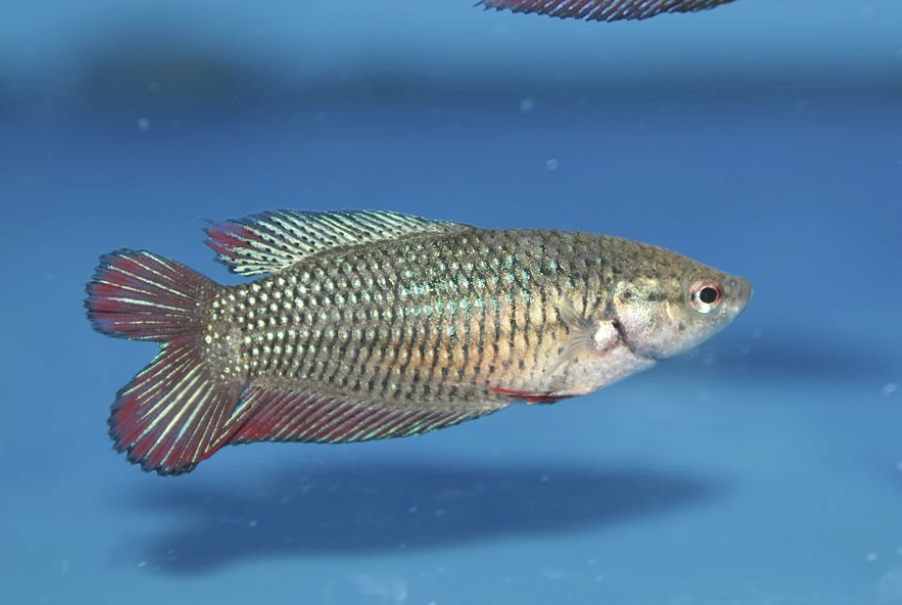
- A 20-gallon tank can comfortably house 6-8 female bettas.
- Each betta should have at least 3-5 gallons of personal space.
- Start with 6 females and add more if the tank dynamics are stable.
- Arrange tank decor to break up sight lines and define distinct territories.
- Heavily plant the tank, allowing the bettas to claim their planted areas.
- Add structures like caves, driftwood, and tangles of soft silk plants for hiding spots.
- Monitor the tank closely for the first 2 weeks for any signs of aggression.
- Be prepared to remove any persistently aggressive or stressed females.
- Maintain pristine water quality with partial water changes twice per week.
- Supplement with air stones or powerheads to prevent dead spots.
- Reconfigure structures periodically to prevent any fish from becoming too territorial.
With more space to claim as their own, 6-8 female bettas can thrive in a well-appointed 20-gallon tank. Tank maintenance and watchfulness for aggression are still required for sorority success.
www.tinyfishtank.com
Are female bettas fighting for territory?
Yes, female bettas can exhibit territorial aggression and fighting in certain situations. But female bettas are less aggressive than males but still have territorial instincts. In the wild, female bettas establish distinct territories with resources for nesting and feeding.
When housed in a tank, females compete to claim space and establish a hierarchy. Aggressive behaviors like “flaring gills, chasing, and nipping” can occur as they sort out the pecking order. Ongoing fighting happens if tank space is limited, forcing fish to encroach on each other’s area.
Female bettas may also fight over resources like food, plants for cover, or preferred nesting spots. Bullying and attacks typically target subordinate females at the bottom of the hierarchy.
Successful betta sororities require plenty of space and resources so each female can establish a territory. Tank setups that prevent line-of-sight clashes and allow hidden getaways help reduce aggression.
So female bettas absolutely can and will fight over territory and tank dominance if they feel crowded or lack proper resources. Careful tank setup is key to minimizing conflict.
What can you do if female bettas fight?
Here are some tips if females start fighting in a betta sorority tank.
- Closely observe to identify the aggressors and victims. Look for torn fins, CLAMPED fins, hiding, or skittish behavior.
- Immediately remove aggressive fish and place them in separate timeout tanks to cool down.
- Treat injured fish with clean water and Indian almond leaves, which are antibacterial.
- Rearrange tank decor to disrupt established territories and lines of sight.
- Reduce numbers if the tank is overcrowded. No more than 5 females per 10 gallons.
- Provide more plants, hides, and caves – increase visual barriers and solo spaces.
- Use tank dividers to separate fish if needed. Let them see but not physically access each other.
- Try reintroducing fish after a couple of weeks. Go slowly and observe.
- Remove any persistently aggressive females – they may not be suitable for sorority life.
- Maintain excellent water quality, as fighting causes stress. Use partial water changes and supplements.
- Add aquarium salt or adjust the temperature slightly if infection occurs due to nipped fins.
- Be ready to house females separately if aggression can’t be resolved through tank adjustments.
Stay vigilant, and don’t hesitate to remove bullies or victims when trouble starts. Rearranging the habitat and separating fish is key to restoring peace.
Conclusion
A vibrant betta sorority aquarium takes proper planning and care to thrive. Provide a sufficiently sized tank of 10+ gallons, allowing at least 5 gallons per female. Choose young, healthy females of equal size and age when possible. Heavily plant the tank with plenty of decor to break up sightlines and define territories. Introduce all new additions gradually and monitor closely for signs of aggression.
Maintain excellent water quality with frequent partial changes. Have backup tanks ready to isolate any persistently aggressive or stressed females. Be prepared to adjust the habitat layout periodically to ease tensions. While not without some effort, a well-executed betta sorority setup can make for a stunning showcase of active, elegant fish. Do your research, take things slow, and enjoy the fruits of your labor in harmony.


